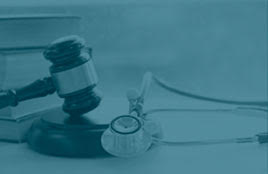This past October, the Joint Commission on Accreditation of Hospitals published its “2013 National Patient Safety Goals” for hospitals. The Joint Commission accredits and certifies more than 20,000 healthcare organizations and programs in the United States. Joint Commission accreditation and certification is recognized nationwide as a symbol of quality that reflects an organization’s commitment to meeting certain performance standards.
The purpose of the National Patient Safety Goals is to implement measurable goals to improve patient safety. The goals cover six areas:
1) Identify patients correctly
2) Improve staff communication
3) Use medicines safely
4) Prevent infection
5) Identify patient safety risks
6) Prevent mistakes in surgery
Each category includes at least one specific goal to boost safety. Goal three focuses specifically on improving the safety of using medications. The Joint Commission then gives guidance to hospitals by setting standards of performance and recommending the activities, or ‘elements of performance’, that healthcare personnel can employ to achieve each standard.
Standard NPSG.03.04.01: Label all medications, medication containers, and other solutions on and off the sterile field in perioperative and other procedural settings.
Elements of Performance for NPSG.03.04.01: Medications or other solutions in unlabeled containers are unidentifiable. Errors, sometimes tragic, have resulted from medications and other solutions removed from their original containers and placed into unlabeled containers. This unsafe practice neglects basic principles of safe medication management, yet it is routine in many organizations.
The labeling of all medications, medication containers, and other solutions is a risk-reduction activity consistent with safe medication management. This practice addresses a recognized risk point in the administration of medications in perioperative and other procedural settings
Standard NPSG.03.05.01: Reduce the likelihood of patient harm associated with the use of anticoagulant therapy.
Anticoagulation therapy can be used as therapeutic treatment for a number of conditions, the most common of which are atrial fibrillation, deep vein thrombosis, pulmonary embolism, and mechanical heart valve implant.
Elements of Performance for NPSG.03.05.01: However, it is important to note that anticoagulation medications are more likely than others to cause harm due to complex dosing, insufficient monitoring, and inconsistent patient compliance. To achieve better patient outcomes, patient education is a vital component of an anticoagulation therapy program. Effective anticoagulation patient education includes face-to-face interaction with a trained professional who works closely with patients to be sure that they understand the risks involved with anticoagulation therapy, the precautions they need to take, and the need for regular International Normalized Ratio (INR) monitoring. The use of standardized practices for anticoagulation therapy that include patient involvement can reduce the risk of adverse drug events associated with heparin, low molecular weight heparin, and warfarin.
Standard NPSG.03.06.01: Reconciling medication information.
Elements of Performance for NPSG.03.06.01: There is evidence that medication discrepancies can affect patient outcomes. Medication reconciliation is intended to identify and resolve discrepancies—it is a process of comparing the medications a patient is taking (and should be taking) with newly ordered medications. The comparison addresses duplications, omissions, and interactions, and the need to continue current medications. The types of information that clinicians use to reconcile medications include (among others) include medication name, dose, frequency, route, and purpose. Hospitals should identify the information that needs to be collected to reconcile current and newly ordered medications and to safely prescribe medications in the future.
Using medications safely in hospitals is an issue addressed by the Joint Commission on Accreditation of Hospitals, because medications errors are a known, measurable problem in hospitals all across the country. The Standards, and how they have been implemented, will be reviewed by members of the Joint Commission when they enter a hospital to survey how well a hospital is complying with the standards.






